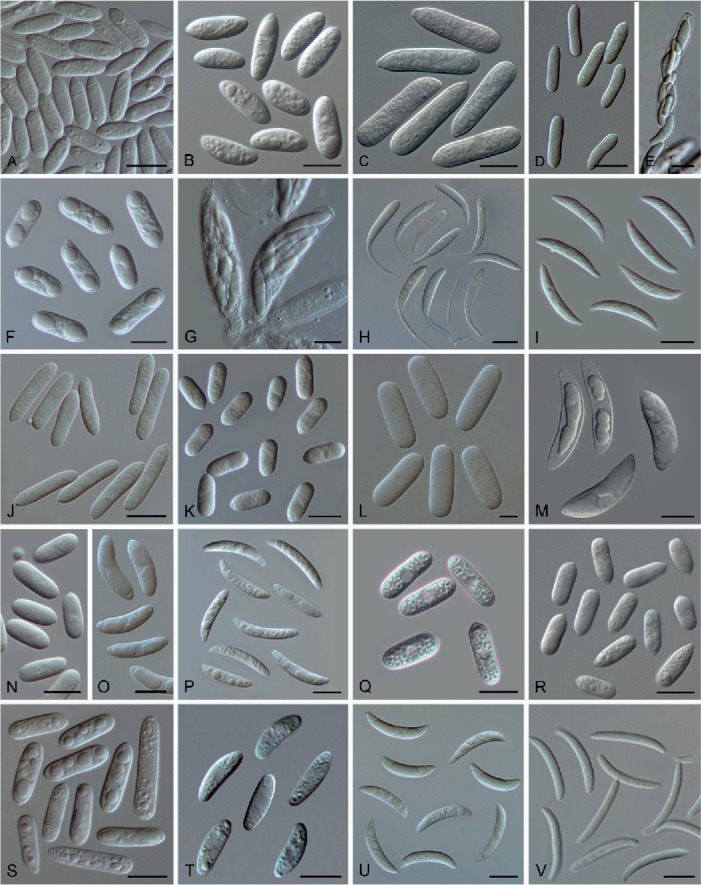Fig. 40.

An illustration of the diversity of conidia and ascospores in different species complexes of Colletotrichum. A, B. Acutatum (A. Conidia of C. schimae, NN046984; B. Ascospores of C. salicis, CBS 607.94). C. Agaves (Conidia of C. agaves, CBS 118190). D, E. Bambusicola (D. Conidia of C. bambusicola, LC8468; E. Ascus and ascospores of C. bambusicola, LC8533). F, G. Boninense (F. Conidia of C. chamaedoreae, NN052885; G. Ascus and ascospores of C. chamaedoreae, NN052885). H. Caudatum (Conidia of C. shivasii, BRIP 15842a). I. Dematium (Conidia of C. zhejiangense, NN076215). J. Destructivum (Conidia of Colletotrichum sp., LC8517). K. Dracaenophilum (Conidia of C. buxi, NN047139). L, M. Gigasporum (L. Conidia of C. magnisporum, CBS 398.84; M. Ascospores of C. pseudomajus, CBS 571.88). N, O. Gloeosporioides (N. Conidia of C. gloeosporioides, CGMCC 3.17360; O. Ascospores of C. alienum, CBS 115183). P. Graminicola (Conidia of C. multiseptatum, NN055357). Q. Magnum (Conidia of C. magnum, CGMCC 3.17616). R. Orbiculare (Conidia of C. orbiculare, CBS 570.97). S,T. Orchidearum (S. Conidia of C. orchidearum, CBS 135131; T. Ascospores of C. reniforme, LC8230). U. Spaethianum (Conidia of C. iris, LC3697). V. Truncatum (Conidia of C. subacidae, LC13857). Scale bars = 10 μm.
